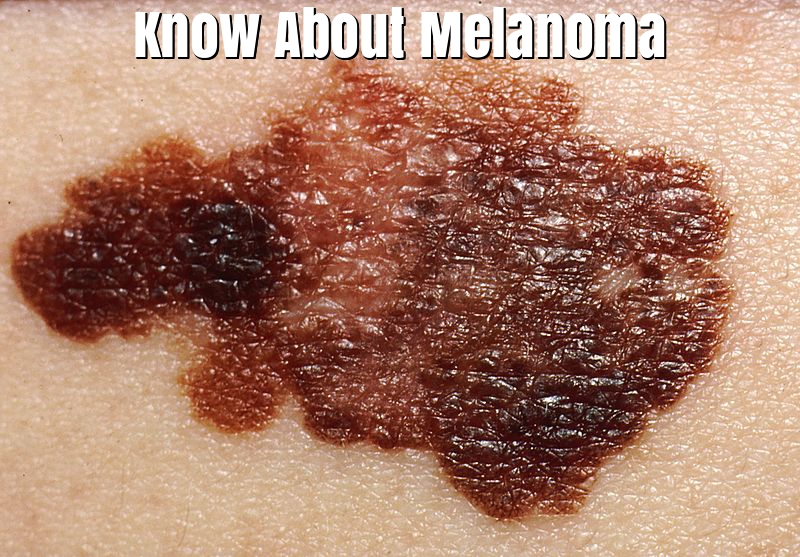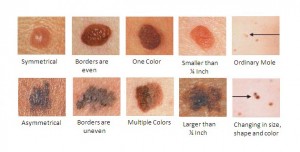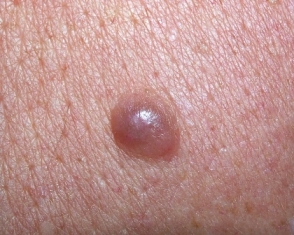
What Is Melanoma?
Melanoma is one of the most dangerous types of skin cancers. It is the development of malignant tumors on melanocytes. Melanocytes are the cells that produce the dark pigment named melanin, which is responsible for the color of your skin. These cells normally are found in the skin, but also occur in other parts of your body like the eye and the bowel. This cancer develops in any part of the body that contains melanocytes and has caused the majority deaths related to skin cancers commonly among the Caucasians. If it is found early, and is completely removed, then the chances of cure is early. But if not, the cancer is likely to spread and advance to other parts of your body which makes it hard to be treated and can be fatal. Malignant melanoma survival rate seems unlikely, however depending on the severity of the cancer, and how efficiently the treatments are done.
Symptoms Of Melanoma?
The first symptom of this deadly skin cancer is normally change in shape or color of your existing mole. In case of a nodular melanoma, development of lumps anywhere on the skin too is a symptom. At a later stage, the mole may start itching, bleeding and ulcerate. Early symptoms of melanoma is summarized by the “ABCDE” mnemonic ( associated with the mole).

Asymmetry
Borders ( irregular in condition)
Color ( multicolor)
Diameter ( bigger than 6mm, about the size of a pencil eraser)
Evolves over time
However, the classifications for nodular melanoma is summarized by different mnemonic, the “EFG”.
Elevated above the skin surface
Firm to a touch
Grows
What Causes Melanoma?

Melanoma, or any other cancer is caused by the damage to the DNA inside cells. This damage is inherited by genetic mutations, and environmental factors. So basically, there are two possible factors that triggers melanoma; genetic and UV rays (environmental factor).
1. Genetic. I bet most of us have already understood how this whole genetic factor works when it comes to cancers or any other similar illness. Genetic is undoubtedly a factor when the illness or disease runs in the family. It creates a high risk for another family member to develop the illness when he or she shares the same blood (genes) and DNA cells with the person who’s already infected by the illness. This is normally the main cause for most types of cancers, but a rare factor when it comes to melanoma.
Must read : Breast Cancer Symptoms, Stages and Treatment Available
2. The Ultraviolet rays ( UV radiation). Excessive tanning of skin, or exposing your skin for long hours under the hot sun means your skin is receiving more UV radiations, which is definitely not good. UV radiation is the main cause of it and many other types of skin cancer, but the symptoms normally show slower compared to inheriting it by genetic factor.
Must read : Cervical Cancer Symptoms and Treatments
Stages Of Melanoma and Melanoma Treatments
Like any other cancers, melanoma too is associated with five stages. That is the 0 stage, the first stage, the second stage, the third stage and the fourth stage. The severity of symptoms and exacerbation of it increases with the stages. Here is some info on the stages of melanoma.
a) Stage 0
In this stage, the melanomas normally have not grown deeper than the epidermis. This can be treated treated by a surgery: by removing the melanoma and a margin of about 1/2cm of the normal skin surrounding it.
Also read : How to Relieve Upper Back Pain?
b) Stage 1
In stage 1, it is treated by surgery too. But this time, the melanomas will be removed together with the normal skin, depending on its thickness. Normally, according to its development in this stage, not more than 2cm of normal skin around the melanoma is removed. Some doctors may consider the sentinel lymph node biopsy if the cancer is at risk of spreading to the lymph nodes.
Also read : Leukemia Symptoms and Its Treatments Available
c) Stage 2
The cancer might have spread to the lymph nodules by this time. Therefore, the sentinel lymph node biopsy is definitely the treatment for melanoma in stage 2. But however, if the surgery is done, and the sentinel node still contains cancer, then a dissection of the lymph node will be carried out. Meaning, all the lymph nodes in that area will be completely removed.
Doctors might also recommend a treatment with interferon after surgery, that is the adjuvant therapy for some patients. Drugs like vaccines can also be useful to reduce the chances of a recurrent melanoma.
Also read : Hyperthyroidism Symptoms and Its Treatments
d) Stage 3
This is one of the mos risky stages of melanoma, the cancer has already reached all the lymph nodes and it is normally more severe. One of the melanoma treatments applied for this stage is surgery, that requires a wide excision of the primary tumor together with lymph node dissection. While adjuvant therapy with interferon is advised to keep the cancer from coming back for a longer time. Not only that, radiation therapy is also an option if most of the lymph nodes still contain cancer.
If more melanomas are developed, then they all should be removed. In case if it is not possible, then injection of Bacille Calmette-Guerin (BCG) vaccine, interferon, or interleukin-2 (IL-2) directly into the cancer cells is an option. Other possible melanoma treatments include targeted therapy, immunotherapy, chemotherapy and biochemotherapy (immunotherapy combined with chemotherapy).
Also read : High Blood Pressure Symptoms And Treatments
e) Stage 4
Melanoma in stage 4 is very hard, sometimes can be impossible to cure. This is because the cancerous cells have already spread to the other parts of body. But however, stage 4 melanoma treatment options are: radiation therapy, chemotherapy, an advanced immunotherapy and also a surgery.
The Ipilimumab ( Yervoy) is a new immunotherapy drug proven to help people with advanced cancer live longer. It also helps in easing melanoma symptoms. This medication has some severe side effects, but is definitely an option after the chemotherapy and other types of immunotherapy.
Also read : Top 10 Best Home Remedies For Cough
Malignant melanoma is a rarely developed skin cancer, but can be very harmful once developed. The best prevention for this cancer is by limiting the exposure skin to the sun. Make sure to apply sunscreen each time you step out of your door and drink plenty of water to keep your skin well hydrated. If you have any family history on this cancer, do go for regular medical check ups.
Please do share with us here in HNBT the other tips regarding melanoma treatments that you know.
